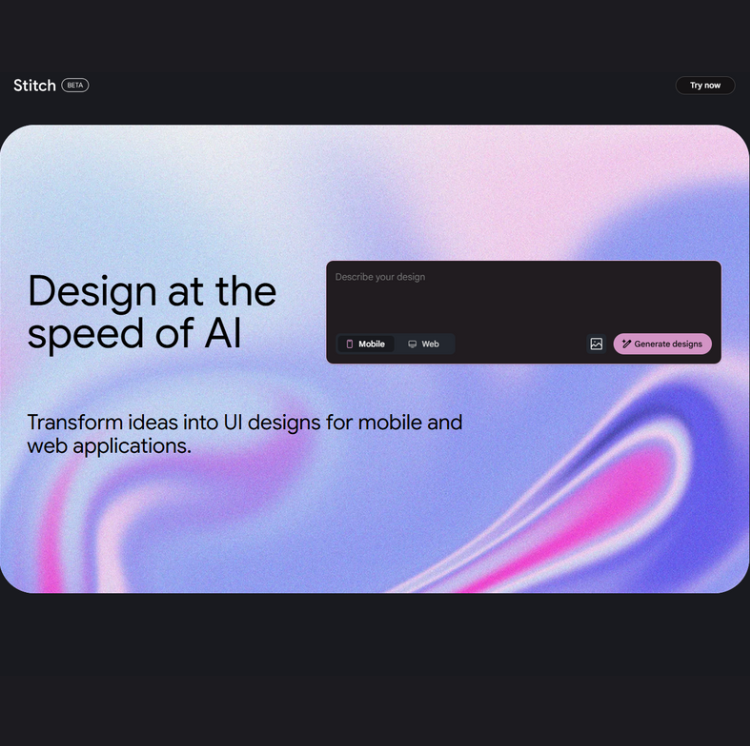TL;DR
AI's real value isn't replacing human decision-making - it's handling the data processing grunt work so people can focus on judgment, wisdom, and context. Organizations using AI to enhance rather than replace human judgment are seeing better decisions, happier employees, and competitive advantages. The key is strategic partnership: let AI crunch the numbers while humans handle the thinking that requires experience, ethics, and understanding of real-world consequences.
The AI debate has gone completely off the rails.
On one side, you've got evangelists promising AI will solve every problem humanity has ever faced. On the other, doomsayers convinced machines are about to make human thinking obsolete. Both camps are missing the real story.
After working with automation tools and AI systems, I've learned something important: the most transformative impact of AI isn't about replacement - it's about amplification. AI's true value lies in handling the cognitive grunt work so humans can focus on what actually requires judgment, wisdom, and contextual understanding.
This isn't a futuristic concept. It's happening right now, and the organizations getting it right are seeing dramatic improvements not just in efficiency, but in the quality of human decision-making.
Understanding the Difference Between Computing and Judgment
What you'll learn:
• Why AI can spot patterns but can't understand what they mean for real people
• The fundamental difference between processing data and making wise decisions
• How this distinction plays out across healthcare, legal, and business scenarios
Here's something that took me time to grasp: there's a fundamental difference between processing information and making good decisions.
AI excels at pattern recognition, data analysis, and consistent processing. It can crunch through thousands of variables, identify trends, and flag anomalies faster than any human could dream of. But making sense of what those patterns mean in context? Deciding what action to take based on incomplete information? Understanding the human implications of data-driven decisions? That's where human judgment becomes irreplaceable.
Consider the difference in healthcare. An AI system can analyze medical images and identify potential abnormalities with remarkable accuracy. But a physician brings something fundamentally different to the diagnosis: understanding of the patient's history, awareness of their fears and concerns, knowledge of their family situation, and the ability to weigh treatment options against quality of life considerations.
The AI provides data. The doctor provides judgment.
This distinction plays out across every professional domain. In legal work, AI can analyze case precedent and identify relevant statutes, but lawyers must balance competing principles of justice and navigate unprecedented situations. In business, AI can model financial projections and market trends, but executives must integrate stakeholder concerns, organizational values, and ethical implications into strategic decisions.
The boundary between computation and judgment marks exactly where AI assistance ends and human wisdom begins.
How AI Creates Space for Better Decision-Making
What you'll discover:
• Real examples of how AI is freeing up professionals to focus on high-value work
• Why doctors, lawyers, and financial advisors are getting better results with AI assistance
• The surprising amount of time being reclaimed for actual thinking and relationship buildingThe real magic happens when AI handles routine cognitive labor, freeing up mental bandwidth for higher-order thinking. Consider how much of professional life gets consumed by information processing: organizing data, conducting preliminary research, generating standard reports, and managing routine communications. These tasks are necessary but they prevent us from exercising our uniquely human capacities.
This is where AI shines. By automating information-intensive tasks, AI liberates cognitive resources for deliberative reasoning and complex judgment calls.
The Medical Model
In healthcare settings, diagnostic AI systems are transforming how physicians allocate their time and attention. Instead of spending hours reviewing routine test results and images, doctors can focus on treatment decisions that require empathy, ethical consideration, and nuanced judgment.
One radiologist I know describes it perfectly: "The AI catches things I might miss in the scan, but I decide what those findings mean for this particular patient's life." The technology handles pattern recognition; the human handles wisdom.
Legal Practice Revolution
Document analysis tools are reshaping legal work in similar ways. Instead of junior associates spending 60-hour weeks reviewing contracts for standard clauses, AI systems can flag unusual terms and potential issues. This frees lawyers to focus on case strategy, client counseling, and complex legal reasoning.A partner at a mid-sized firm told me their AI-assisted document review cut preparation time by 40%, but more importantly, it allowed their team to spend more time on creative legal strategies and client relationships.
Financial Services Transformation
In financial services, algorithmic analysis of market data and risk factors enables advisors to concentrate on understanding clients' complex goals, risk tolerances, and life circumstances. Instead of generating standard reports, they can focus on personalized guidance and relationship building.
The pattern is consistent across industries: AI handles the data processing so humans can focus on judgment, relationships, and strategic thinking.
The Research Behind Human-AI Collaboration
Key findings you need to know:
• How experts use AI differently than beginners (and why this matters)
• The surprising way AI explanations can lead people astray
• Evidence from healthcare and legal studies showing human-AI teams outperform both working alone
Recent studies are validating what many of us have observed in practice. Researchers at the University of Washington, Harvard, and MIT conducted field experiments examining how people make decisions with and without AI assistance. Their findings reveal crucial insights about effective human-AI collaboration.
The research showed that AI significantly helped non-experts reach conclusions similar to those of domain experts. This suggests AI's potential to democratize access to specialized knowledge and analysis. But the more interesting finding was how experts interacted with AI differently than novices.
Experts didn't simply accept AI recommendations. They used AI outputs as starting points for deeper analysis, questioning the reasoning behind suggestions and considering what the AI might be missing. They treated AI as a sophisticated research assistant rather than an oracle.
This critical engagement with AI outputs represents the optimal model for human-AI collaboration. The technology provides insights and analysis; humans provide judgment and wisdom.
However, the research also identified a concerning tendency: people significantly increased their reliance on algorithmic recommendations when AI systems provided explanations, especially when rejecting options. This "automation bias" highlights the importance of developing what researchers call "AI interaction expertise" - the ability to engage critically with
AI systems rather than deferring to them automatically.
Additional studies in healthcare show that AI-assisted physicians outperform either AI or physicians working alone in diagnostic accuracy. Similar patterns emerge in legal document review and financial analysis. The evidence consistently points toward collaboration rather than replacement as the optimal model.
Real-World Implementation Challenges
The problems nobody talks about:
• Why relying too heavily on AI might make our judgment skills rusty
• How AI systems can amplify historical biases and what to do about it
• The growing gap between AI "haves" and "have-nots" in organizations
• Hidden power dynamics that affect who benefits from AI implementation
While AI's judgment-enhancing potential is significant, several important challenges must be addressed for successful implementation.
The Skills Atrophy Problem
Critics raise a valid concern: if AI handles more cognitive tasks, might our judgment capabilities atrophy through disuse? Judgment develops through experience - making decisions, observing outcomes, and refining approaches over time. If AI systems increasingly preempt opportunities to exercise judgment, we might see a degradation of this capacity.
This risk is particularly acute for emerging professionals who might rely on AI guidance before developing their own judgment capabilities. A young lawyer who consistently defers to AI analysis might never develop the intuitive sense for legal strategy that comes from grappling with complex cases.
Organizations must create environments where decision-makers regularly engage with the underlying phenomena of their fields. This might involve periodic "AI-free" exercises, structured reflection on AI outputs, or mentorship programs that emphasize judgment development alongside technical skills.
Bias and Transparency Concerns
AI systems inherit biases from their training data, risking the replication or amplification of historical inequities. When AI recommends hiring decisions based on historical data that reflected past discrimination, it perpetuates systemic bias. When "black box" systems make recommendations without explaining their reasoning, users may accept these recommendations uncritically.
Addressing this challenge requires rigorous attention to transparency, diverse teams in AI development, and regular auditing of AI outputs for bias. Organizations must establish clear governance structures ensuring human oversight of AI-assisted decisions, particularly in high-stakes situations.
The Digital Divide
Not all organizations can deploy sophisticated AI tools, risking wider gaps between those with access to AI assistance and those without. Small firms competing against large organizations with advanced AI capabilities face significant disadvantages. Developing economies might struggle to access judgment-enhancing AI tools, exacerbating global inequalities.
This challenge demands thoughtful consideration of access, training, and equity in AI deployment. Solutions might include open-source AI tools, shared AI services, or public-private partnerships that democratize access to judgment-enhancing technologies.
Organizational Power Dynamics
The narrative of AI enhancing judgment can mask fundamental shifts in organizational power. Who decides which tasks AI handles and which remain human prerogatives? How do these decisions reflect existing hierarchies and biases? These questions remind us that technological implementation always occurs within social contexts that affect how benefits and costs are distributed.
Best Practices for Effective Human-AI Collaboration
Your implementation roadmap:
• How to maintain human control while leveraging AI insights
• Why transparency in AI reasoning is non-negotiable
• The art of dividing tasks between humans and AI for maximum effectiveness • Building "AI interaction expertise" in your team
• Creating feedback loops that improve collaboration over time
Realizing AI's judgment-enhancing potential requires intentional design and implementation. Several practices can guide effective collaboration:
Maintain Meaningful Human Control
High-stakes decisions, ethical dilemmas, and novel situations must retain human oversight and ultimate accountability. AI should inform and analyze, but humans must decide and take responsibility. This requires clear governance structures defining when and how AI recommendations should be overridden.
Ensure Transparency and Explainability
AI systems must communicate not just outputs but reasoning. Understanding why AI flagged a transaction as suspicious, recommended a particular treatment, or suggested a legal strategy enables humans to evaluate and potentially override recommendations. This transparency supports critical engagement rather than passive acceptance.
Implement Complementary Task Allocation
Effective collaboration leverages the comparative advantages of AI and humans. AI excels at processing large datasets, identifying patterns, and maintaining consistency. Humans excel at contextual understanding, ethical reasoning, and navigating ambiguous situations. Task allocation should reflect these strengths.
Develop AI Interaction Expertise
The ability to engage critically with AI systems represents a crucial modern skill. Organizations should invest in developing this expertise across their teams. This includes understanding AI capabilities and limitations, knowing how to interpret AI outputs, and maintaining the confidence to override AI recommendations when judgment suggests different approaches.
Create Feedback Loops
Successful human-AI collaboration requires continuous learning and adjustment. Organizations need mechanisms for evaluating the effectiveness of AI-assisted decisions and refining their collaborative approaches over time.
Looking Forward: The Future of Human-AI Partnership
What's coming next:
• Why mastering human-AI collaboration beats having the fanciest AI tools
• The skills that will become more valuable as AI advances
• How organizations can build sustainable competitive advantages through thoughtful AI partnership
• What success looks like when you get the balance right
The most successful organizations of the next decade will be those that master human-AI collaboration rather than those that simply deploy the most advanced AI systems. This mastery requires understanding that AI and human judgment are complementary rather than competitive capabilities.
AI will continue advancing in its ability to process information, identify patterns, and generate insights. But the need for human judgment - the ability to interpret these insights in context, consider ethical implications, and make decisions under uncertainty - will only grow more valuable.
The goal isn't to eliminate human judgment from decision-making processes. It's to create partnerships where AI handles what it does best so humans can focus on what we do best. This requires maintaining our judgment capabilities while developing new skills for effective AI collaboration.
Organizations that get this balance right will see improvements not just in efficiency but in the quality of decision-making itself. They'll have teams that are both more productive and more thoughtful, more data-driven and more wise.
Conclusion: Partnership, Not Replacement
The future belongs to neither pure human judgment nor algorithmic decision-making, but to thoughtful partnerships between human wisdom and artificial intelligence. AI doesn't replace good judgment - it creates more time and space for judgment to flourish.
This partnership requires intention, skill, and continuous attention to maintaining the human elements that make judgment valuable. But for organizations willing to invest in this collaboration, the rewards are substantial: better decisions, more satisfied employees, and sustainable competitive advantages built on the unique combination of human wisdom and artificial intelligence.
The question isn't whether AI will change how we make decisions - it already has. The question is whether we'll use AI to enhance our judgment or allow it to replace our thinking entirely. The choice is ours, and it matters more than we might realize.









